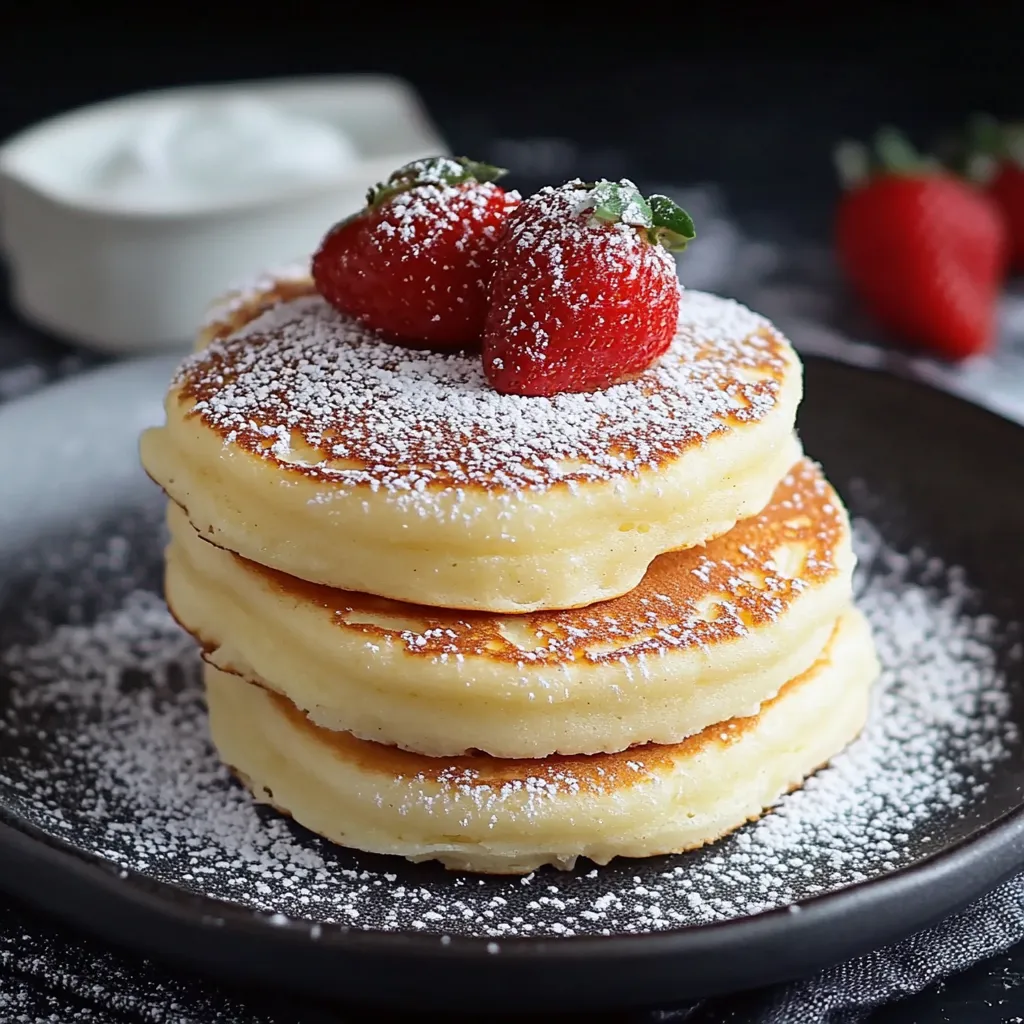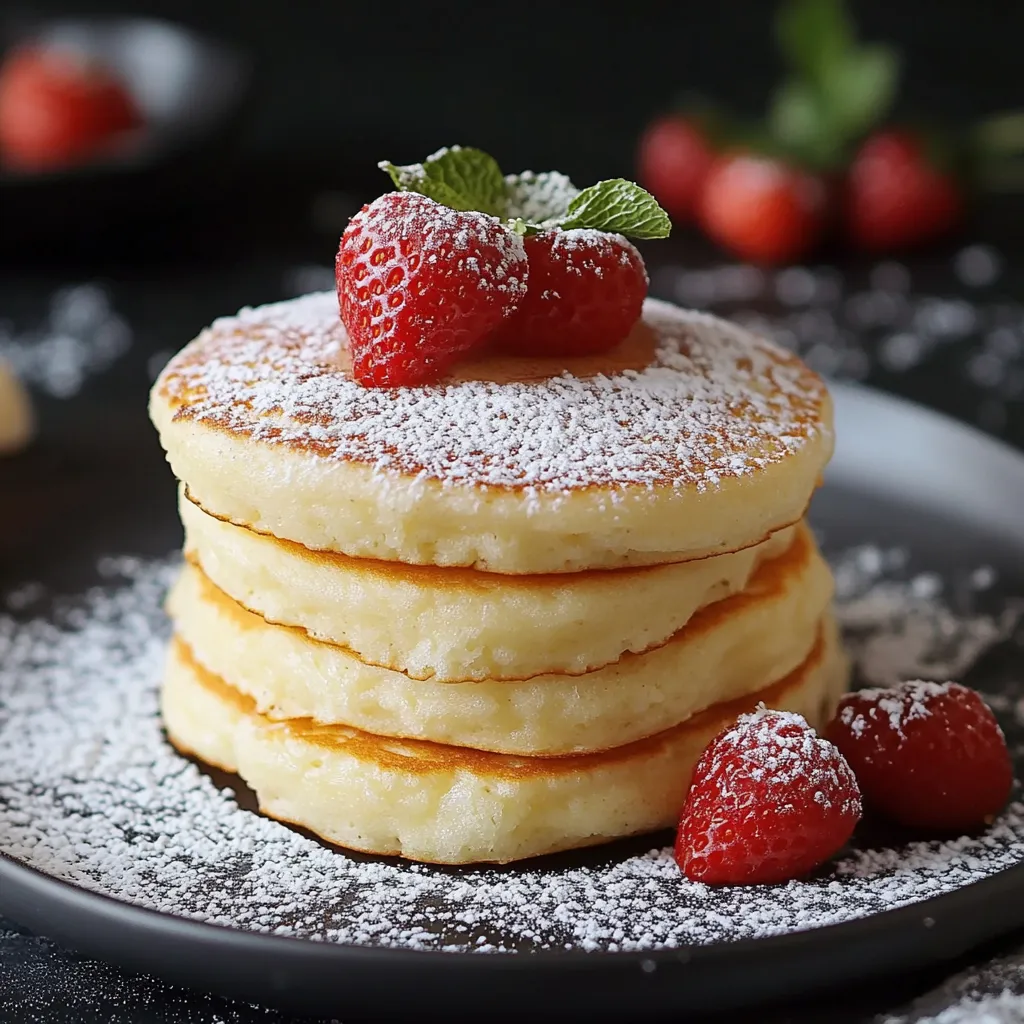 Pin it
Pin it
Whipping up fluffy Japanese souffle pancakes feels like balancing culinary chemistry with pure kitchen magic. These cloud-soft treats turn basic breakfast stuff into airy puffs of happiness, each mouthful delivering that weightless, pillowy texture that's made them all the rage in Japan's coolest breakfast spots.
My first shot at these pancakes was a total flop - they came out flat and tough. After trying again and again and finally getting the hang of folding meringue correctly, I managed to nail that heavenly texture that makes these pancakes so sought-after.
Key Components and Shopping Guidance
- Egg whites: Need to be totally yolk-free for proper volume
- Cake flour: Has less protein, making softer pancakes
- Lemon juice: Just squeezed helps your meringue stay firm
- Granulated sugar: Gives both firmness and sweetness
- Cornstarch: Makes everything softer and keeps meringue stable
- Milk: Shouldn't be cold for better mixing
- Salt: Brings out all the tastes
- Oil: Something mild and tasteless for cooking
Step-by-Step Cooking Guide
- Step 1:
- Nail Your Meringue: Split eggs when they're cold. Let whites warm up. Check your bowl is spotless and dry. Drop in lemon juice before whipping. Sprinkle sugar bit by bit. Whip until you see stiff peaks.
- Step 2:
- Mix Your Batter: Sift your flour with salt. Gently fold flour mix into meringue. Put yolks in carefully to keep the fluffiness. Stir milk in with just a few strokes. Put straight into piping bag. Don't dawdle or you'll lose air bubbles.
- Step 3:
- Get Cooking Right: Warm pan on low flame. Brush with tiny bit of oil. Squeeze batter in tall mounds. Pour water around edges for steam. Put lid on while cooking. Only flip once the bottom looks set.
 Pin it
Pin it
When I run cooking workshops on this recipe, everyone stresses about flipping these delicate pancakes. I've figured out that just waiting until the sides look completely firm makes turning them so much easier - being patient truly makes all the difference with souffle pancakes.
Managing Your Heat
Getting the temperature just right matters a ton. Too high, and your pancakes brown before they rise; too low, and they won't get tall enough. The sweet spot lets them cook slowly for that impressive height.
Tricky Parts
Most fails happen because of three things: your meringue wasn't right, you handled the batter too much, or your pan was the wrong temperature. Once you get these basics down, you'll nail it every time.
Watch The Clock
These pancakes need your complete focus: Don't walk away. Look for visual hints. Stick to the cooking times. Eat them right away for the best experience.
 Pin it
Pin it
These souffle pancakes show what happens when skill meets patience. Though they ask for your careful attention, what you get is a breakfast that turns everyday ingredients into something truly magical.
Frequently Asked Questions
- → Why is using weights for ingredients important?
- Using exact amounts ensures the proper rise and texture of the pancakes.
- → What’s the reason for cooking pancakes in two parts?
- It allows the layers to rise higher and cook evenly inside.
- → What’s the role of water in the pan?
- The steam helps cook the pancakes thoroughly, much like a water-based technique.
- → Can I prepare the batter in advance?
- No, it’s best to use it right after preparing for the ideal results.
- → How do I get the tallest, fluffiest pancakes?
- Be sure to whip the meringue properly, cook them slowly, and don’t skip steam cooking.
